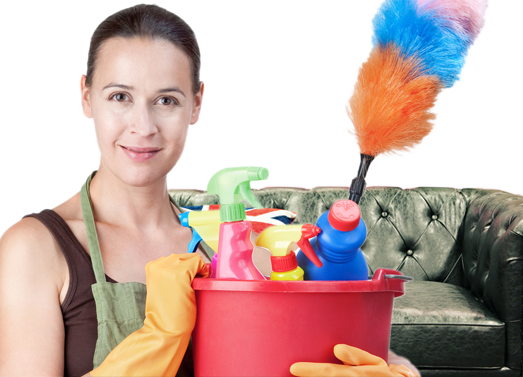Cleaning the Air: Improving Life Quality Indoors
Posted on 08/06/2025
Cleaning the Air: Improving Life Quality Indoors
In our modern world, where people spend more time indoors than ever before, maintaining clean indoor air is essential for healthy living and overall well-being. Unfortunately, indoor air pollution is often overlooked, but it can significantly affect your comfort, efficiency, and even your long-term health.
Why Indoor Air Quality Matters
Many people assume that air pollution is just an outdoor problem, but the truth is that air inside our homes, offices, and schools can be even more polluted than the air outside. The Environmental Protection Agency (EPA) ranks indoor air pollution among the top five environmental risks to public health. Considering that the average person spends up to 90% of their time indoors, understanding and improving indoor air quality is vital.
- Health Impacts: Poor indoor air quality can aggravate and cause respiratory problems, allergies, asthma attacks, headaches, and fatigue.
- Productivity and Focus: Studies have shown that clean air can boost productivity, concentration, and overall comfort, especially in offices and educational buildings.
- Long-Term Benefits: Reducing indoor pollution can decrease healthcare costs and promote healthier lifestyles for people of all ages.

Main Sources of Indoor Air Pollution
To start cleaning the air indoors, it is essential to identify the pollutants that degrade indoor air quality. Here are some common sources:
1. Volatile Organic Compounds (VOCs)
- Found in household cleaners, paints, varnishes, glues, and air fresheners.
- VOCs can irritate the eyes, nose, and throat, and prolonged exposure can have severe health implications.
2. Mold and Mildew
- Grow in damp, humid areas like bathrooms, kitchens, and basements.
- Produce spores that can trigger allergic reactions and asthma attacks.
3. Dust and Pet Dander
- Accumulates on carpets, furniture, and bedding.
- Common cause of allergies and asthma in both adults and children.
4. Combustion Pollutants
- Emitted from smoking, cooking, fireplaces, candles, and heating systems.
- Includes harmful substances such as carbon monoxide and nitrogen dioxide.
5. Outdoor Pollutants
- Pesticides, pollen, and car exhaust can enter homes through open windows or attached garages.
- These external pollutants further compromise indoor air quality.
Immediate Benefits of Indoor Air Cleaning
When you focus on improving indoor air quality, the positive effects can be immediate and long-lasting:
- Reduced Allergy and Asthma Symptoms: Lower exposure to irritants can decrease flare-ups and medication dependency.
- Better Sleep Quality: Clean air helps you breathe easier during the night, leading to more restful sleep.
- Increased Energy: Eliminating pollutants reduces headaches, fatigue, and mental fog.
- Enhanced Immune Support: Cleaner air minimizes chronic inflammation and allows your body to function at its best.
Effective Strategies for Cleaning the Air Indoors
There are numerous ways to keep indoor air fresh and clean. From simple habits to advanced technologies, let's explore the most effective solutions:
1. Regular Ventilation
Letting fresh air in is perhaps the simplest way to replace stale indoor air. Open windows and doors whenever possible, especially when cooking, cleaning, or after using chemicals. If you live in a polluted area, ventilate at times when outdoor air quality is optimal.
2. Use of Air Purifiers
- High-Efficiency Particulate Air (HEPA) filters are the gold standard for air cleaning.
- Air purifiers remove fine particles like dust, pollen, and pet dander.
- Some models also neutralize VOCs, bacteria, and viruses with activated carbon or UV-C light technologies.
Investing in a quality air purifier can make a substantial difference in sensitive spaces, such as bedrooms or home offices.
3. Eliminating Tobacco Smoke
Cigarette smoke is a major indoor air contaminant. If possible, enforce a strict no-smoking policy indoors to protect your family's health and ensure clean air.
4. Control of Humidity Levels
- Keep indoor humidity between 30% and 50% to prevent mold growth and dust mite infestations.
- Use dehumidifiers in damp areas like basements and bathrooms.
- Vent appliances that produce moisture, such as clothes dryers, outside.
5. Household Plants for Air Purification
While plants aren't a substitute for mechanical air purifiers, certain indoor plants can help reduce specific toxins and add oxygen. Popular choices include:
- Snake Plant (Sansevieria)
- Spider Plant (Chlorophytum comosum)
- Peace Lily (Spathiphyllum)
- Bamboo Palm (Chamaedorea seifrizii)
Be mindful that some plants may be toxic to pets.
6. Routine Cleaning and Decluttering
- Vacuum with HEPA filters to trap allergens like dust mites and pet dander.
- Wipe down surfaces with damp cloths to remove settled dust.
- Wash bedding, curtains, and rugs frequently in hot water.
- Minimize clutter to reduce the number of surfaces where dust can accumulate.
7. Maintenance of HVAC Systems
Your heating, ventilation, and air conditioning (HVAC) system can either help or hurt indoor air quality, depending on how well it is maintained.
- Change air filters every 1-3 months or as recommended.
- Schedule annual professional inspections to identify mold, leaks, or blockages.
- Ensure all vents and ducts are clear and clean.
8. Smart Home Technologies
New smart sensors and air quality monitors can track levels of humidity, CO2, VOCs, and particulate matter. These provide real-time feedback and help you optimize your efforts in cleaning the air indoors.
Special Considerations for Sensitive Groups
Certain groups are especially vulnerable to the harmful effects of indoor air pollution. To improve the life quality indoors for everyone, pay extra attention to the following:
- Babies and Children: Their developing lungs and immune systems make them more susceptible to pollutants like dust, mold, and smoke.
- Elderly Individuals: Pre-existing respiratory or cardiovascular conditions can be worsened by poor air quality.
- People with Allergies or Asthma: Even minor contaminants can trigger symptoms and attacks.
- Immunocompromised Individuals: Mold, bacteria, and viruses can pose serious health threats.
For these individuals, maintaining exceptionally clean indoor air is more than a comfort--it's a necessity.
Common Myths About Indoor Air Quality
1. "If my house smells clean, the air must be clean."
False. Many air fresheners and cleaning products actually release chemicals (VOCs) that worsen indoor air pollution.
2. "New homes have better air quality."
Not always. Many new houses are tightly sealed for energy-efficiency, which can trap pollutants and reduce natural ventilation. Building materials and furnishings also release VOCs after installation.
3. "Opening the windows always improves air quality."
Sometimes. If outdoor air is polluted due to smog, pollen, or construction, opening windows can make things worse. Use air quality indexes to decide when to ventilate.
4. "One purifier in the house is enough."
It depends on the size and layout of your home. Larger homes and multi-level spaces often require multiple purifiers for thorough cleaning.
Eco-Friendly Choices for Cleaner Indoor Air
Striving for clean indoor air doesn't mean sacrificing sustainability. In fact, many eco-friendly habits align with cleaner air:
- Use natural or plant-based cleaning products instead of harsh chemicals.
- Opt for fragrance-free and low-VOC furniture, paints, and materials.
- Choose non-toxic pest control solutions and avoid unnecessary pesticide use indoors.
- Make use of houseplants for natural filtration and humidity regulation.
- Reduce plastic and synthetic item use, which can emit harmful residues over time.

The Role of Routine Air Quality Testing
Regular air quality testing uncovers hidden dangers such as radon, mold, asbestos, CO2 buildup, or carbon monoxide leaks. Consider professional testing if:
- You experience unexplained health symptoms like cough, headaches, or allergies.
- Your home is in an area with industrial or traffic-polluted air.
- You recently renovated or remodeled your house.
- Members of your household are sensitive to contaminants.
Early detection empowers you to take action before hazards escalate.
Conclusion: Breathe Easier, Live Better
Indoor air quality is a crucial but often neglected aspect of our daily lives. Integrating a combination of ventilation, air purification, cleaning, and eco-friendly choices not only removes pollutants but also promotes a healthier, happier home environment.
By prioritizing cleaner indoor air and remaining vigilant about possible contaminants, you will enjoy improved life quality indoors--from better sleep and fewer allergies to enhanced mood and energy.
Start small by incorporating just a few of these strategies into your routine, and you'll immediately notice the difference.
Your lungs, body, and mind will thank you for it!
- Remember: Cleaning the air is not a one-time action but an ongoing commitment to a safer, brighter future for you and your loved ones.
For more advice on maintaining a healthy indoor environment, speak to air quality professionals or visit authoritative health resources such as the EPA or WHO.




